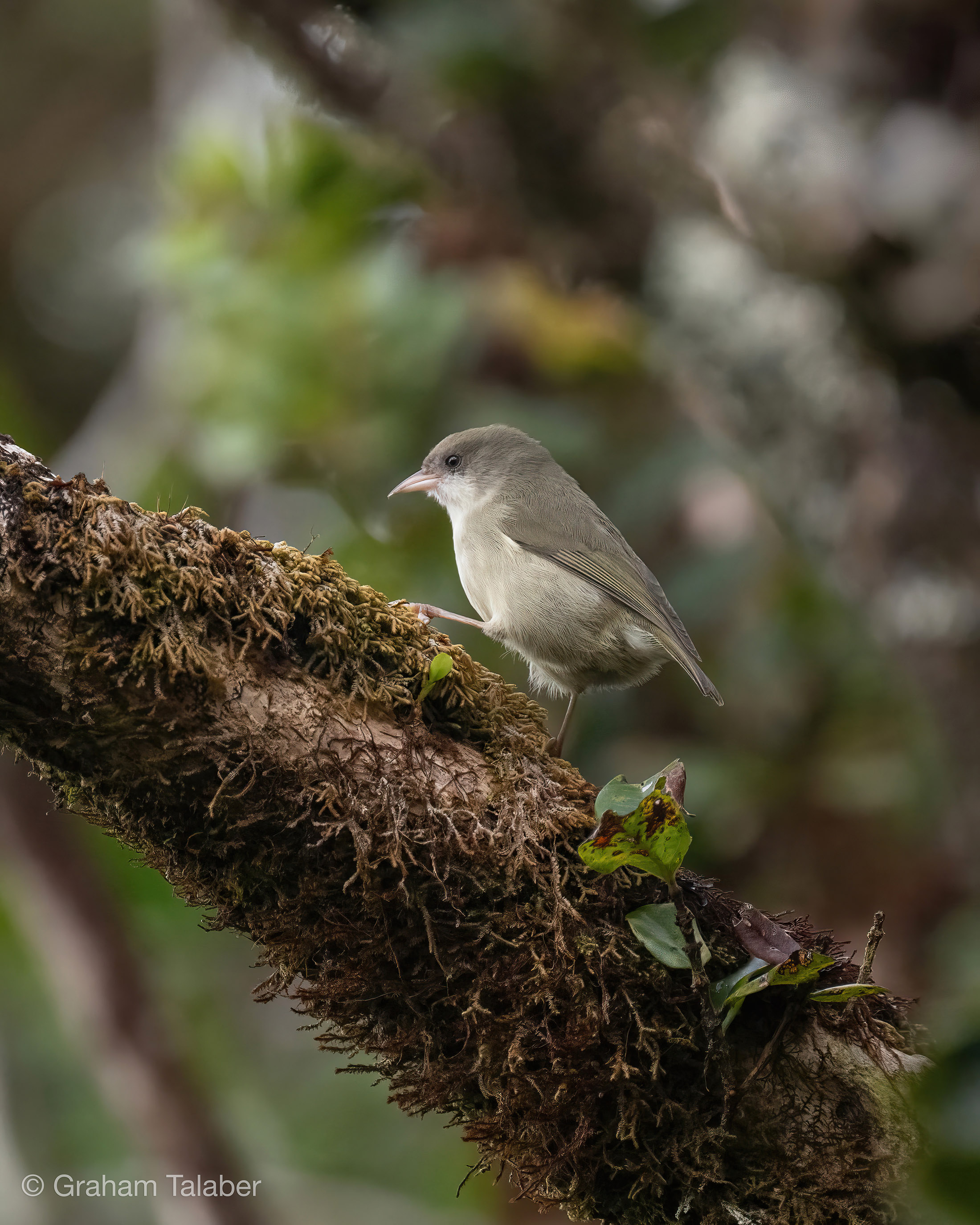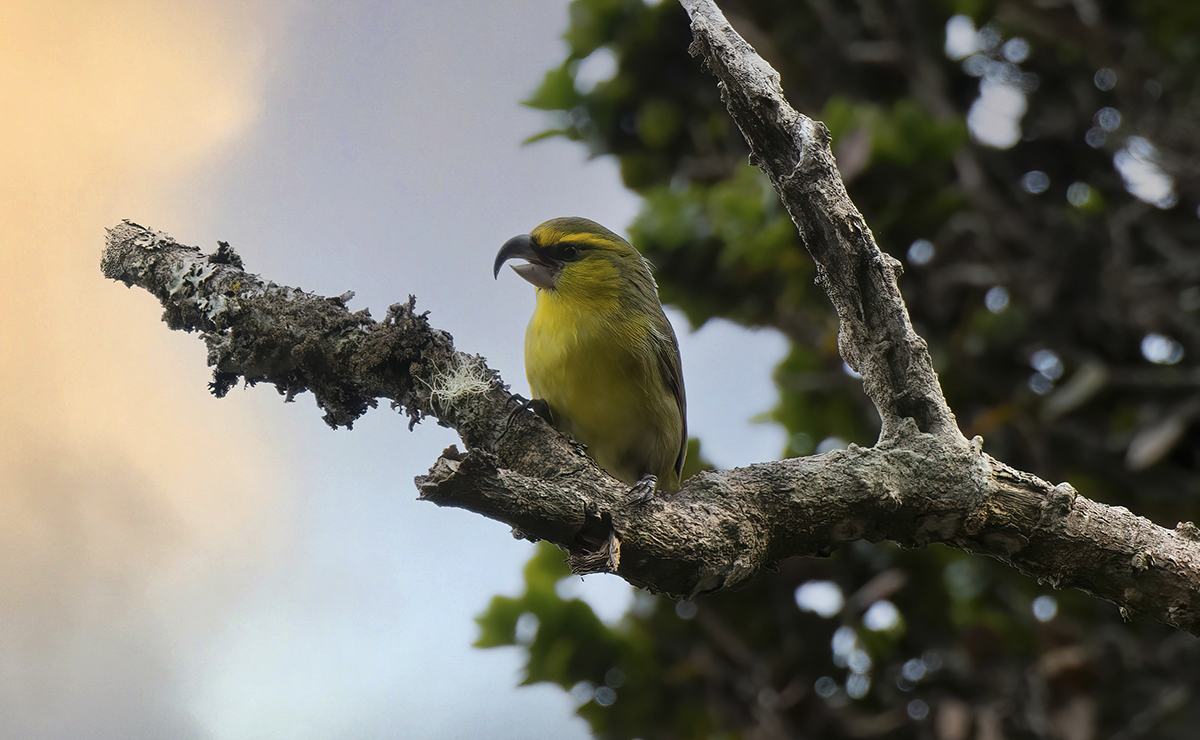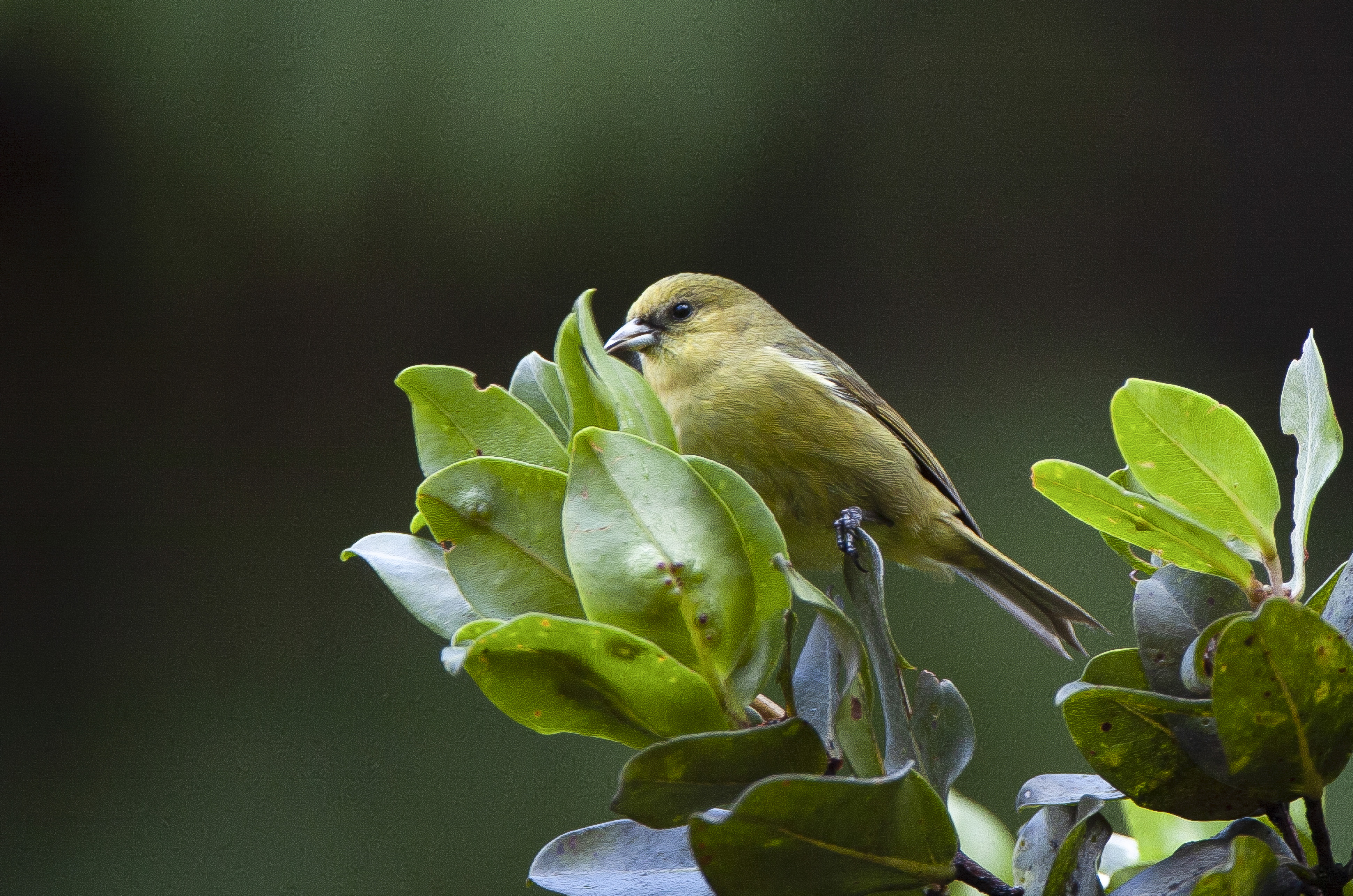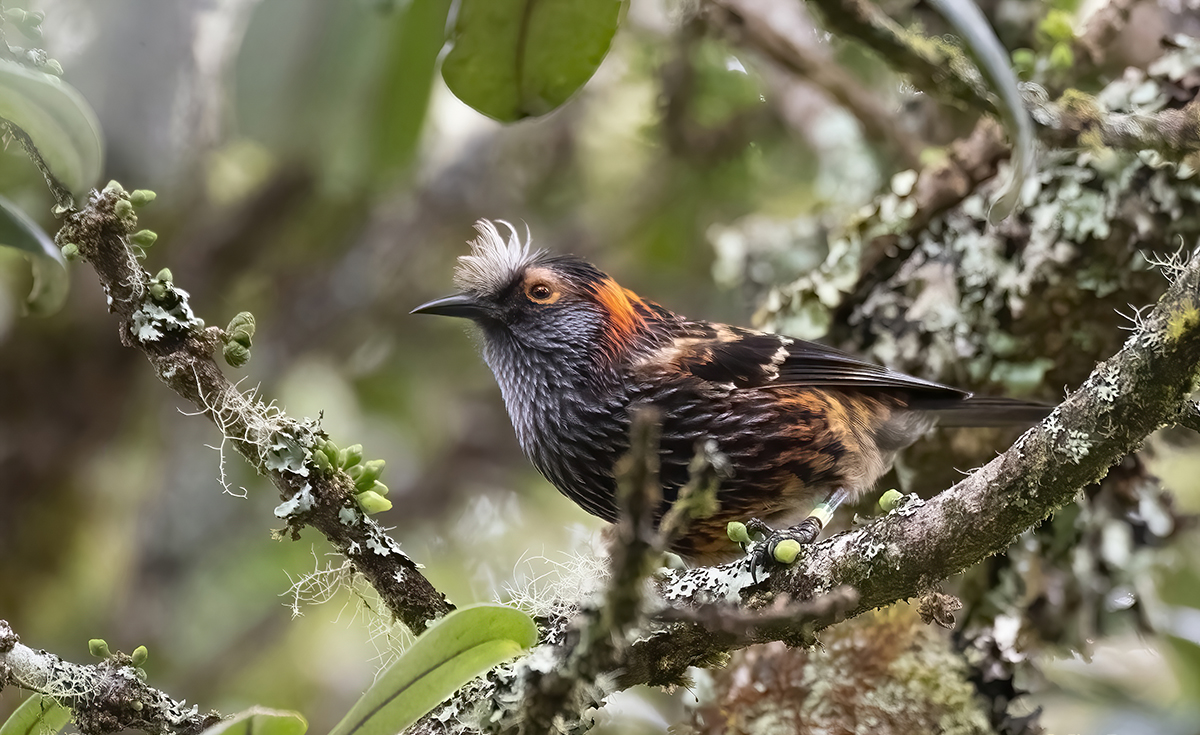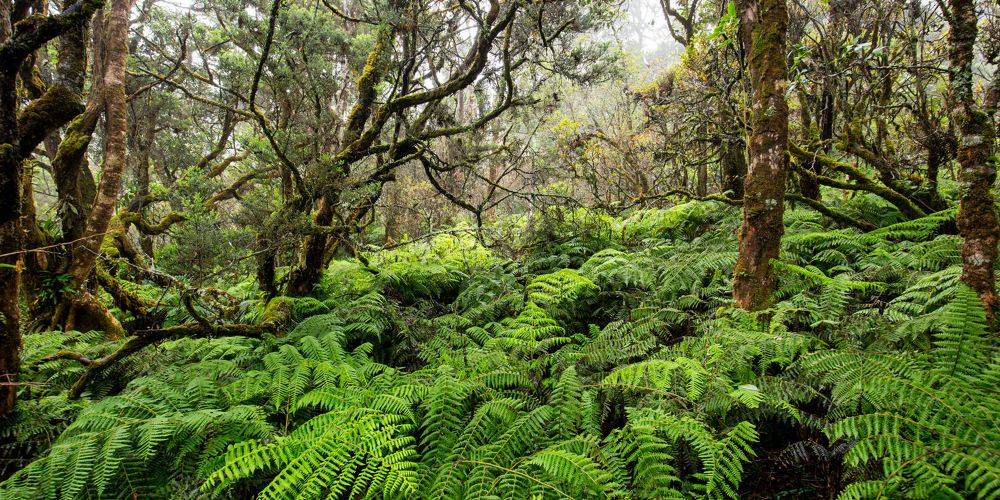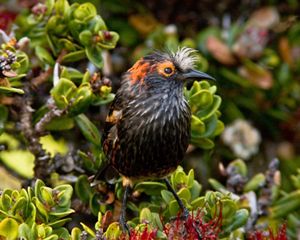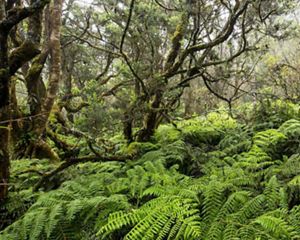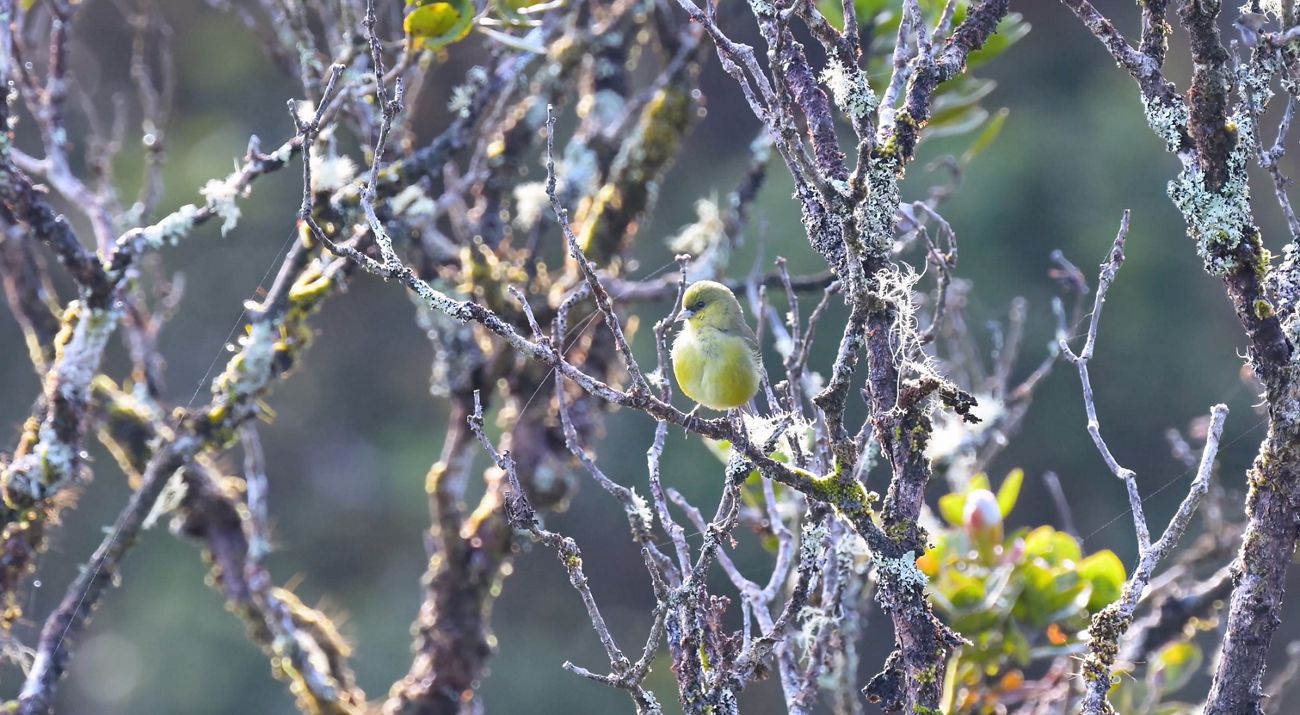
Nā Manu Nahele: Hawaiʻi’s Forest Birds
Hawaiʻi’s melodious and beautiful honeycreepers evolved with the Hawaiian Islands over millions of years, but we could lose them in our lifetime. See how you can support these birds.
The Song of Our Forests: Hawaiian Honeycreepers
Hawai‘i’s melodious and beautiful honeycreepers evolved with the Hawaiian Islands over millions of years, but we are losing them in our lifetime. Once, there were at least 142 species of native birds across Hawaiʻi, and more than 50 of them were honeycreepers. These birds play essential ecological roles in our forests as pollinators, insect eaters and seed dispersers. Today, only 17 honeycreepers remain, and 11 are endangered. Invasive southern house mosquitoes carrying avian malaria are the most urgent threat. Just one bite can kill a honeycreeper.
Estimated Time to Extinction
If we lose these special birds, we also lose the ecosystem roles they perform and a piece of Hawaiian culture.
Read more about the Race to Extinction.
Our Best Hope
Scientists agree that our best hope—one that can meet the scale and the pace of the threat—is reducing mosquito populations as quickly as possible. TNC and its partners with Birds, Not Mosquitoes are releasing non-biting, male southern house mosquitoes that cannot successfully reproduce. The first releases are taking place on Maui and Kaua‘i. There are no mosquitoes native to Hawaiʻi, and nothing living in Hawaiʻi depends on them for survival. Reducing or removing them will have no negative impact on Hawaiʻi’s ecosystem.
You Can Help
Celebrate
Learn about and celebrate Hawaii’s forest birds during Ka Makahiki o Nā Manu Nahele: The Year of the Forest Birds. Photo © Zach Pezillo
Learn
Learn about what’s being done to prevent the extinction of Hawaiian forest birds by TNC and a coalition of partners with Birds, Not Mosquitoes. Photo © Jim Denny
Make a Difference
Sign up to receive regular conservation updates from Hawai‘i.
Watch and Listen
Hawai‘i’s Vanishing Forest Birds
TNC's Hawai‘i and Palmyra chapter is working closely with partners to stave off the imminent extinction of four species of Hawaiian honeycreepers. Learn about how biotechnology could help save these precious forest birds.
(2:34)
Vanishing Voices
This 30-minute documentary tells the story of Hawaiian Honeycreepers, the crisis they face from non-native mosquitoes transmitting avian malaria, and the technology that gives them a fighting chance at survival.
(28:44)
Birds Not Mosquitoes
Birds Not Mosquitoes team members share about Nā Manu Nahele - Hawai'i's Native Forest Birds
(5:03)
Hawai'i's native forest birds need you.
You can help Hawai'i's native forest birds by learning about them, encouraging action to help them survive and supporting organizations like The Nature Conservancy and our partners.
(:30)
Developing pilina with Hawaiʻi's native forest birds
Learn how to develop pilina, or relationship and connection, with Hawai'i's native forest birds. Ulalia Woodside, our Executive Director, shares ideas on HI Now, during the 2024 Merrie Monarch Festival.
(4:35)

Hawai‘i as a Model for Conservation
Connecting Hawaiian culture and tradition to conservation ecology
BirdNote®
Hawai‘i as a Model for Conservation
Written by Mark Bramhill
Mark Bramhill: This is BirdNote.
[Hawaiian forest soundscape]
Sam ‘Ohu Gon is the Senior Scientist and Cultural Advisor for the Nature Conservancy of Hawai‘i. And he‘s quick to tell you about how special Hawai‘i’s ecology is:
Sam ‘Ohu Gon: Hawai‘i is an amazing place because it‘s a microcosm of the world, right? In one limited area, you have a huge number of the major biome types of the entire globe. And you can find an environmental setting in Hawai‘i that can support just about every living plant species.
Mark Bramhill: With invasive species and climate change, Hawai‘i has experienced so much loss and extinction since Western colonizers arrived. But Sam believes Hawaiian culture and tradition are key to advancing conservation ecology, and has done a lot of work connecting these two worlds.
Sam ‘Ohu Gon: The best managed and preserved areas on earth that remain are ones that largely retain their indigenous relationships. It‘s a movement that‘s growing. And Hawai‘i is kind of leading the way in that. There is growing recognition that traditional knowledge is a vital part of long-term conservation success,
Mark Bramhill: Sam hopes that one day, Hawai‘i can be not just a microcosm of ecology, but of conservation as well.
Sam ‘Ohu Gon: We get to be the example of what can happen in a place if you can work the right combination of people and the natural world. People living in a place, caring for their lands from the top of the mountains above them all the way down into the depths of the sea.
Mark Bramhill: For BirdNote, I’m Mark Bramhill.
###
Senior Producer: John Kessler
Producer: Mark Bramhill
Managing Editor: Jazzi Johnson
Managing Producer: Conor Gearin
Content Director: Jonese Franklin
Bird sounds provided by The Macaulay Library of Natural Sounds at the Cornell Lab of Ornithology, Ithaca, New York.
Quiet Planet QP17-2106 recorded by Gordon Hempton.
BirdNote‘s theme was composed and played by Nancy Rumbel and John Kessler.
© 2024 BirdNote April 2024
Narrator: Mark Bramhill
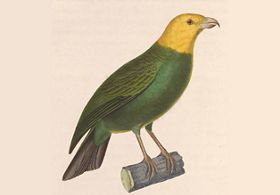
Memory of the ‘Ō‘ū
One of the last encounters with a native Hawaiian bird.
BirdNote®
Memory of the ‘Ō‘ū
Written by Mark Bramhill
Mark Bramhill: This is BirdNote.
Like many native Hawaiian birds, the ‘Ō‘ū is presumed to be extinct. It was a stout, secretive yellow-and-green honeycreeper, seen for the last time in the late ’80s.
Sam ‘Ohu Gon was one of the last people to see an ‘Ō‘ū. He’s worked at The Nature Conservancy of Hawai‘i for nearly 40 years. And back in 1988, he took part in an Audubon Christmas Bird Count, hoping to encounter some of the critically endangered native birds.
Sam ʻOhu Gon: And my team and I had been listening and training ourselves, via tape recordings of various birds of that region to identify the calls of all of the endemic forest birds known from that place.
[Clips of Palila and ‘Ō‘ū are played, sounding like through a tape recorder]
Mark Bramhill: And so Sam and his group are dropped off deep in the native forests on the island of Hawai‘i.
Sam ʻOhu Gon: I remember that day was a miserable, wet and cold day at elevations above 4,000 feet. And every 50 meters we would stop and listen for a certain amount of time, observe whatever birds, write them down. And I remember deep in the Hapu‘u, the native tree fern, section of that forest, and the Hapu‘u so thick there. And the fronds are very solid. You know, if they’re really dry, you can break through them. But they’re criss-crossing from all of the tree ferns growing in such density, and you’re trying to push through those old fronds that haven’t gotten soft enough yet. We were getting exhausted, and, uh, your senses tend to dull, um, when you’re miserable and cold and wet and exhausted in the middle of nowhere. And yet, we were stopped at one of those stations, and we heard that call…
[‘Ō‘ū singing]
Sam ʻOhu Gon: …and we looked at each other, and could hardly believe it, right? Did you hear that? You, you think that’s what we, what we heard. And, uh, we heard a call several times and then it was right above us. So we looked, took our binoculars up, but it was a tall forest and was drizzly and gray. And we were lucky enough to see a ghostly silhouette in the gray drizzle of an ‘Ō‘ū’s butt, essentially.
[‘Ō‘ū singing]
Sam ʻOhu Gon: We noted our location and on our return, we went to the lead ornithologist and asked to listen to the calls of the birds. And we told him, don’t tell us which birds we’re listening to. Just play the bird songs. And when we heard the call of the ‘Ō‘ū, we looked at each other, we asked him to stop. And we said, that’s exactly what we heard.
That was the first time and the last time that I had ever heard ‘Ō‘ū. It was a very hopeful feeling, but unfortunately, that was the last year that they were ever heard.
Mark Bramhill: The sense of loss feels personal to Sam—but he also feels a sense of honor in carrying the bird’s memory.
Sam ʻOhu Gon: To have seen plants and birds and animals that are just not to be seen, in common existence. That is a great privilege to me. I was so fortunate to be able to do that.
Mark Bramhill: The ‘Ō‘ū lives on, in stories, as the vibrant green in traditional Hawaiian featherwork. And people like Sam are working to ensure the remaining species, like the ‘I‘iwi, the ‘Apapane, and the Palila, stay with us.
[‘Ō‘ū singing]
For BirdNote, I’m Mark Bramhill.
###
